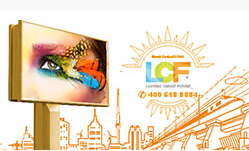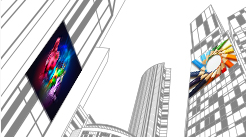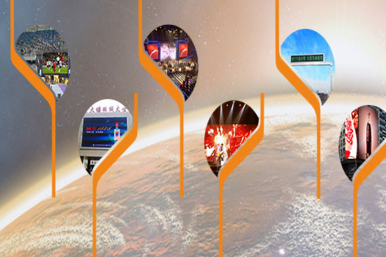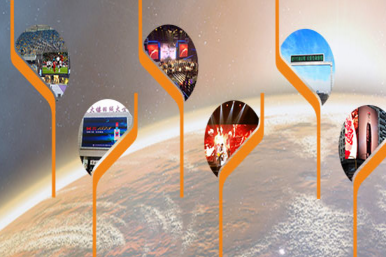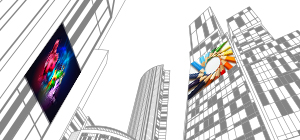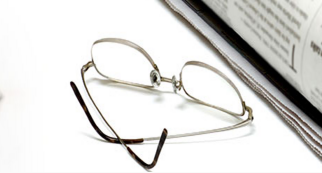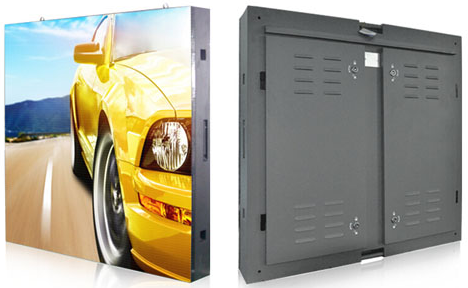Publisher: Supplier of LED Display Time: 2019-12-05 17:09 Views: 5228
As a display product with high engineering and customization, at the beginning of its birth, LED display screens mostly appeared on the surface of buildings and squares and other landmark buildings in the image of outdoor large screens. However, with the dot spacing of LED display products From PXX to PX, and then break through P1, continue to march towards P0.X, LED display products began to penetrate into the direction of indoor applications, the early outdoor large-screen era and the "sense of distance" between users is increasing. The continuous decrease and narrowing of the spacing, whether it is Samsung's entry into LED movie screens, or the mutual achievements between the construction of e-sports venues and LED display manufacturers, all illustrate this point.
Therefore, the debate over "whether the development of smaller-pitch LED display products has practical significance" has obviously settled: for LED display manufacturers, the dot pitch is getting smaller and smaller, which is the LED display can penetrate the indoor market and expand The foundation for more subdivided fields, and on the eve of this "5G+8K" era, only when the dot pitch is getting smaller and smaller, the interactivity of the LED display can be realized.
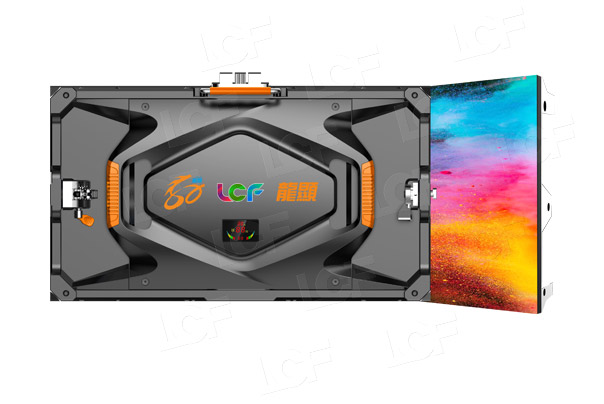
Liancheng Falong Xianxi's small-pitch LED display-S series has the characteristics of ultra-fine, ultra-stable, ultra-quiet, ultra-energy-saving, ultra-safe, thin and light design, and convenient maintenance.
The development and maturity of small-pitch technology has narrowed the distance between the LED display and the audience. When the picture of the LED display product becomes clearer and clearer, how to further narrow the distance with the user? User interaction has become a problem that manufacturers must consider.
Although LED display has the advantages of fast response speed and high dimensional freedom compared with other display methods, in terms of touch screen technology, it is much more difficult for LED display to realize touch interaction than other technologies: LED display wants to achieve For interaction, the dot pitch must be reduced as much as possible, so that even when the picture is viewed from a very close distance, there is still no obvious "graininess", but as the dot pitch shrinks, it will inevitably face the stability brought about by the shrinking of the welding feet. With regard to safety issues, as far as LED display screens are concerned, as discrete device assembly products, compared to other display products, LED display products have "congenital shortcomings" in terms of stability. Even bumps during transportation may cause the screen. The display fails, so at this stage, many LED displays are often marked with "no touch" during exhibitions and use, because the audience can easily remove the sweat and grease secreted from their fingers when they touch them. Leaving it on the screen will cause short circuits and reduce the life of the lamp beads. The static electricity of the human body may cause static breakdown. Therefore, it is conceivable that the touch caused by the audience's touch interaction is obviously stronger and more frequent than the collision during transportation. In terms of touch screen, the pace of LED display is always slower than other display methods. It is no accident. Although some manufacturers choose to solve the above problems by coating the surface of the screen, in general, how to solve a series of problems such as dead lights, bad lights, short circuits, and electrostatic breakdown caused by touch. LED display companies still have a long way to go.
However, with the advent of the "5G+8K" era, ultra-high-definition video display and ultra-high-speed signal transmission will inevitably put forward higher technical requirements for display products, and this will inevitably include increased requirements for touch control. And if you want to make the display "at your fingertips", the first thing you need to consider is how to improve the stability and security of the screen.
At present, there are different types of LED packages in the market. Among them, the most frequently appearing N in 1 SMD (4 in 1/6 in 1) product is an extension of the SMD technology route and a transitional product of the traditional SMD production plant. SMT technology is still used for mounting, using 4 in 1 lamp beads, the distance between the edge of the lamp beads and the internal solder joints is about 0.1mm, the core issues such as the air tightness of the lamp beads and the exposed solder feet have not been fundamentally solved, and the product reliability The problem will be exposed again in the process of delivery and use, and it has not been effectively improved. Under normal conditions, a gap of 0.25mm needs to be reserved between the lamp beads. In addition to the size of the discrete device, it is basically impossible to achieve bulk supply of less than 0.9mm. At the same time, N in 1 products are more granular in display effect, and the discrete pitting in the side viewing angle is serious.
Therefore, as the current formal installation technology has reached the point that "fish and bear's paw cannot have both." Because of the dilemma between size and stability, it is already close to small-sized ceilings. Some manufacturers have begun to take another approach and adopt flip-installation. Technology for packaging. Because the flip chip technology directly bonds the light-emitting chip with the PCB pad, and adopts a wire-free packaging process, the welding area is from point to surface, which increases the welding area while reducing the number of solder joints, so it can improve product performance more stable.
As an upgraded product of formal COB, flip-chip COB further improves reliability on the basis of the advantages of formal COB ultra-small dot pitch, high reliability, and non-glaring surface light source. The packaging layer has no bonding wire space, and the packaging layer is lighter and thinner, reducing heat It can improve the light quality and increase the life of the display screen. Super high protection, anti-collision, anti-shock, waterproof, dust-proof, anti-smoke, anti-static. More importantly, because it inherits the characteristics of the overall COB package, it has a high degree of guarantee in touch smoothness, and there will be no bumps during touch operations, and it can also withstand higher intensity and frequency touch operations , Don’t worry about the excessive force and damage to the lamp beads during the touching process.
It can be said that flip-chip COB is a true chip-scale package, because it does not require wire bonding, and the physical space size is only limited by the size of the light-emitting chip. It breaks the dot pitch limit of the formal chip and has the ability to further drop the dot pitch. ability. Therefore, compared with packaging forms such as SMD, flip-chip COB has the above characteristics, and before the arrival of the era of "zero-distance interaction between human screens", it has the advantage of being one step ahead of other packaging methods on the road of touch screen research and development. It should be noted that as the advantages of flip-chip technology become more and more obvious, some SMD manufacturers have also begun to try to use flip-chip technology for packaging. However, due to cost considerations, the number of companies currently choosing flip-chip SMD is still less than that of flip-chip technology. Install COB enterprises.
However, while affirming the advantages and progress of flip-chip COB, we must also note that there will be no perfect technology in this world. The cost increase brought about is a problem that manufacturers who choose flip-chip technology must face, especially flip-chip COB technology, which is more dependent on the machine. Therefore, the operation risk brought by the replacement and upgrade of the machine, It is also the risk that every enterprise needs to face when making a choice. While the flip-chip COB has made progress on the basis of the formal COB, it also inherits the shortcomings of the formal COB that cannot be repaired by a single lamp and the uneven ink color. Compared with other packaging methods, COB still has a lot of advantages. Therefore, it is conceivable that as the dot pitch continues to drop, the flip-chip COB technology is becoming more mature and commercialized, and the LED display "at your fingertips" era is comprehensive Coming will undoubtedly become a practical possibility, not just a theoretical assumption.

